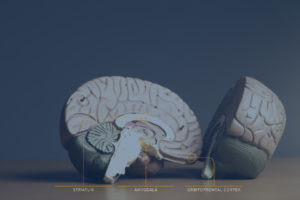Vibrant Days…
Flourishing with Sensory Processing Sensitivity
May 2023
Choose joy. Choose it like a child chooses the shoe to put on the right foot, the crayon to paint a sky. Choose it at first consciously, effortfully, pressing against the weight of a world heavy with reasons for sorrow, restless with need for action. Feel the sorrow, take the action, but keep pressing the weight of joy against it all, until it becomes mindless, automated, like gravity pulling the stream down its course; until it becomes an inner law of nature. If Viktor Frankl can exclaim “yes to life, in spite of everything!” — and what an everything he lived through — then so can any one of us amid the rubble of our plans, so trifling by comparison. Joy is not a function of a life free of friction and frustration, but a function of focus — an inner elevation by the fulcrum of choice. So often, it is a matter of attending to what Hermann Hesse called, as the world was about to come unworlded by its first global war, “the little joys”; so often, those are the slender threads of which we weave the lifeline that saves us.
– Maria Popova
Come Join Us! Thriving at Riverbank: June Sessions
Only one spot open in morning session sign up today!
What: Psychoeducational Outdoor HSP Groups
When: Thursdays June 1st, 8th, 15th, and 22nd
– Must choose morning or evening session
- Morning Session 9:00am-10:45am (One spot left)
Evening Session 5:30pm-7:15pm (Filled)
Where: Fabyan West Forest Preserve on Riverbank Estate, Geneva, IL
For: Adults with high sensitivity that want to grow, deepen their understanding of the trait and experience connection with other highly sensitive adults.
Cost: $279 for entire group
Facilitator: Candy Crawford MSW, LCSW
Weekly Topics:
- Week one: All Things Highly Sensitive. Overview of trait and launching of group vision.
- Week two: Who am I: self care, boundaries and regulation.
- Week three: Thriving: shifting from autopilot to action, learning to align.
- Week four: Enjoying the journey: engaging in play and living with purpose.
Group goals/themes:
- Experience safe, structured community with other hsps in nature
- Deepen understanding of trait via teaching, reflection and group process
- Learn and apply skills of self regulation and self care
- Deepen awareness of inner agency and strengths
- Explore what it looks and feels like to thrive as a highly sensitive person
Registration:
Contact Candy at 630.991.6200 or email lakeorwoods@gmail.com.
Who doesn’t want to become more resilient, I sure do.
Can We Train Our Brains to Be More Resilient?
By Annelise Jolley

Neuroscience offers tools for regulating our response to stress
Imagine this scenario: You’re commuting to work in the car one morning. On the radio, you hear news about a natural disaster across the country. You pass a couple yelling at each other on the sidewalk. You notice the temperature drop now that winter is approaching. Your phone dings with a frantic text from your boss. You arrive at the office stressed and disheartened.
Now, imagine the scene again: On your morning commute, you take time to notice the sun beaming through trees and the crisp feel of fall air. You listen to a brief news segment about a natural disaster, then change the station to enjoy music for the rest of the drive. Your phone dings, but you decide to check it once you’re at your desk. As you drive, you intentionally practice gratitude for the hot coffee in your hand and the meal you shared with a friend last night. You drive by a couple who looks angry and practice compassion meditation. You arrive at work calm and refreshed.
Your environment hasn’t changed between these two scenes. What’s changed is your response to it — what you noticed, and how you processed this sensory input.
Meet your amygdalae
Two almond-shaped structures in our brain’s middle region do the lion’s share of work in processing emotional stimuli. While other brain regions help us interpret information, the amygdalae have an outsized impact on our emotional response. If a situation is emotionally charged, the amygdalae take the reins — and the higher the emotional intensity, the stronger the amygdalae response. Sometimes called the fear center because of its role in detecting negative input, the amygdalae have lately been credited for responding to positive information too.
 Neuroscience shows that people vary widely in their amygdalae response. A 2011 study, for example, found that participants who were more predisposed to anger and agitation had stronger amygdala responses to negative images. What makes the difference?
Neuroscience shows that people vary widely in their amygdalae response. A 2011 study, for example, found that participants who were more predisposed to anger and agitation had stronger amygdala responses to negative images. What makes the difference?
Brain research suggests that happier people — that is, those with a positive disposition and affect style — are more motivated to see opportunities in the environment around them. A person’s affect style, or their baseline level of happiness, has both biological and social roots. Genetics, upbringing, life events, and mental health all factor in. It’s worth noting that happier people don’t have blinders on; they still recognize nearby negative stimuli. The difference is that they are also more likely to seek positive input. Their amygdalae are more responsive to good things than the amygdalae of less happy people, lending them a more balanced emotional response overall.
That doesn’t mean there’s no hope for the naturally negative. Neuroscientists who study what we can do to improve our response to stressful situations have discovered that we can use emotional regulation tools to change how we respond. Even those predisposed to a negative affect style can dampen their amygdalae response to negative input while heightening their positive response. By using certain techniques, research shows, we can actually change how our brain reacts to emotional stimuli.
Techniques for training the brain
Want to change how you feel about a situation? First, change how you think about it. One of the most effective techniques for regulating emotions is cognitive reappraisal. Cognitive reappraisal has been shown to physically alter brain activity. On the practical level, this lessens the weight of negative emotions while giving more credence to the good. A parent whose toddler throws a tantrum might initially feel a flush of stress and anger. Through reappraisal, they can choose to think about the toddler’s response differently. “My child trusts it is safe to be vulnerable,” they might observe, or they might remind themselves that tantrums are normal for two-year-olds. Cognitive reappraisal changes the meaning we give to a situation, writes Summer Allen in a research review about positive neuroscience prepared by the Greater Good Science Center at UC Berkeley, “making the potentially stressful stimuli feel less salient.” This kind of reframing not only changes the intensity of the parent’s response, but it also lessens the duration of strong emotions.
Another tool to add to your emotional regulation toolbox? Try meditation, which research suggests can improve our mood and response to incoming emotional stimuli. Most people are familiar with what’s called “mindfulness meditation.” Mindfulness meditation means simply noticing — without judgement — the sensations, thoughts, and emotions that rise and recede within us. This kind of neutral self-observation helps regulate emotions, especially when practiced consistently. In one study, even a few weeks of meditation training helped participants dampen amygdala responses to a series of emotional images.
Another contemplative technique is compassion meditation, also called “loving-kindness meditation.” The goal of compassion meditation is to move us from isolation and self-centeredness to connection and care for others. Unlike mindfulness meditation, the object of focus is not oneself but others. In a 2013 study, participants who completed a compassion training course based on Eastern meditation showed greater capacity for emotion regulation when viewing images of people suffering. This indicates that compassion meditation may help increase our resilience in the face of stressful situations, especially when they involve the pain of others.
The goal with each of these techniques is not to hide behind rose-colored glasses or ignore important, albeit negative, stimuli. Instead, positive neuroscience offers tools for regulating our emotions in the face of stressful situations. By using these tools, we’re more likely to respond with equanimity and calm.
For 1000 reasons, I declared Spring as my favorite season this year.
Song (and video) I keep playing.

